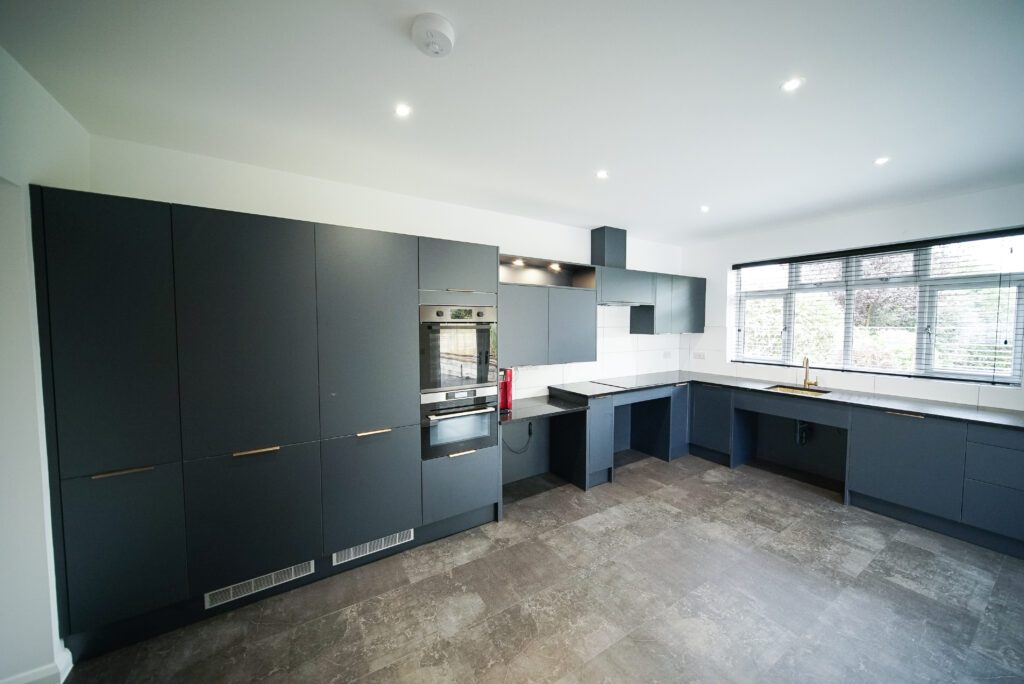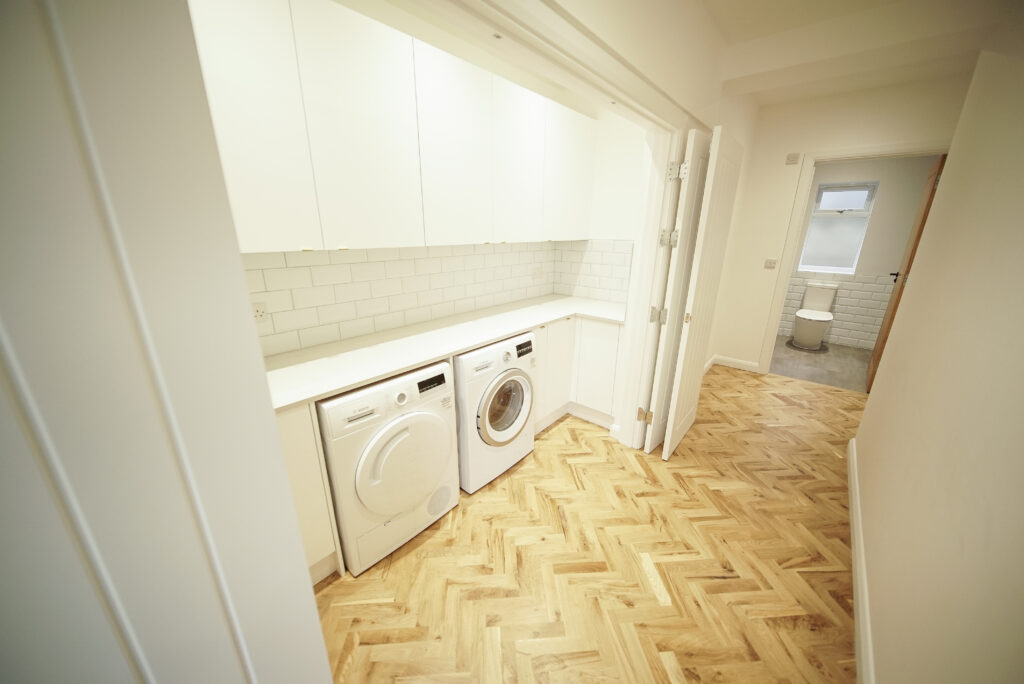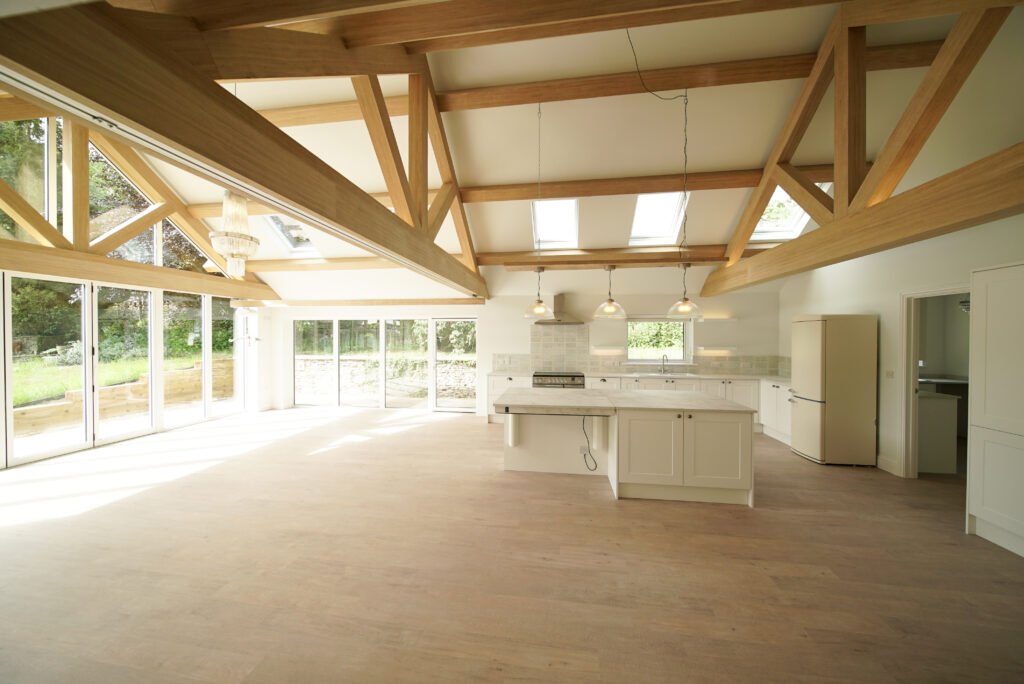National Kids Take Over the Kitchen Day, celebrated annually on September 13th, encourages children and young adults to get into the kitchen alongside their parents or guardians. While this day typically focusses on fostering a love for cooking, it also offers a unique opportunity to shed light on the importance of accessible kitchens in the homes of individuals and families living with disabilities. In most homes, kitchens are the very heart of the home, in this article we look at how accessible kitchens serve as a vital hub where families can bond, children can learn essential life skills, and individuals with disabilities can find avenues for independence and rehabilitation.
Cooking Together: Parents living with disabilities
For parents living with disabilities, an accessible kitchen can be a game-changer in their ability to cook or bake with their children. The kitchen becomes a space where they can actively engage with their children, not just as spectators but as active participants.
Accessible kitchens for children living with disabilities
In homes where children are living with disabilities, an accessible kitchen goes beyond facilitating family cooking sessions. It teaches young individuals essential life skills, setting them on a path toward independence as they transition into adulthood. Accessible kitchens allow children living with disabilities to be more self-sufficient. By learning to cook simple meals or snacks, they gain the confidence and skills necessary for living independently later in life.
Many homes designed for younger clients living with disabilities are built with the future in mind. These homes are equipped with accessible features, including kitchens that accommodate wheelchairs and mobility aids (that often increase in size as the child grows), ensuring a seamless transition into adulthood.
Collaboration with occupational therapists
When designing and building homes for our clients, the PLG team collaborate closely with everyone involved in the care and support of the client. Every area of the home is designed, with the client’s unique needs in mind. In particular, an accessible kitchen can serve as dynamic space for rehabilitation and skill development. As part of their ongoing rehabilitation, clients can work closely with their occupational therapist to master cooking skills, enhancing their physical and cognitive abilities in a practical setting. This engagement in daily activities also promotes health and overall well-being.
Features of an accessible kitchen
To create an accessible kitchen, several key features should be considered:
Layout and floor space
An accessible kitchen should offer ample floor space for manoeuvrability, especially for those using wheelchairs or walking aids. A well-thought-out layout ensures easy access to all areas of the kitchen.
Hoists
Hoists can also be included in kitchen ceilings, to enable clients to move freely around the room. In a recent project, we were able to conceal the hoist tracks within the bottom tie beam of the king post truss making them virtually invisible and eliminating the need for a clinical finish in a beautiful, traditional kitchen.
 Electric rise and fall work surfaces
Electric rise and fall work surfaces
Adjustable countertops that can be raised or lowered at the touch of a button enable individuals with disabilities to comfortably prepare meals at their preferred height without having to rely on others for support.
Electric rise and fall cabinets
Similar to work surfaces, cabinets that can be raised or lowered make storage and retrieval of kitchen essentials more accessible and also reduce the risks of spills or accidents.
Pull-out tables
Pull-out tables or countertops provide additional workspace when needed and can be stowed away to maximise floor space when not in use.
Storage accessibility
Accessible storage ensures that items are within easy reach, reducing the need for strenuous bending, stretching, or lifting heavy objects. This minimises physical strain and fatigue, making kitchen tasks more manageable.
For families living with disabilities, accessible kitchens transform cooking, baking and dining together into an inclusive and often empowering daily activity. They foster independence, facilitate rehabilitation, and promote the development of vital life skills.
“As a recent RIBA study has shown around 9% of the housing stock in England has basic access features, it is accepted that far too many with additional health needs are living in unsuitable housing, which impacts on their ability to live independently.
It is estimated that about one-in-five people live with a disability which means a great number of people can benefit from adaptations to their existing homes.
An architect can work with an individual and wider support group to create a more holistic approach to the whole house design improving everyone’s day to day lives.
At PLG we can create beautiful design solutions to help the occupants live more independently and source fixtures and fittings that avoid the institutional look that many of our clients do not want.” – Justine Matthews, Chartered Architect ARB
#KidsTakeOverTheKitchenDay

